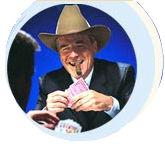More than one-third of Ontario teens who participated in the first-ever
study to examine the gambling habits of students aged 15 to 17 are already
gambling, and their ranks will likely double by the time they’re 20, the
study’s authors say. The study, to be released Thursday, was conducted by
the Responsible Gambling Council, an independent, non-profit organization
dedicated to the prevention of problem gambling. Of the 2,140 teens
surveyed, 34.9 per cent said they’re already gambling. Of those, 40 per cent
said poker is their game of choice, while another 36 per cent admitted to
regularly buying raffle tickets, including scratch-and-win lottery tickets.
Sports betting was next at 23 per cent, followed by playing dice at 15 per
cent and online gambling at 10 per cent. Poker is the most popular form of
gambling because of its accessibility, ease of play and recent explosion in
popularity, said Jon Kelly, chief executive of the council, which has
programs funded by the Ontario government. “It’s relatively easy to learn,
you could play it at home, you can play it with your friends, you can play
it online, you can watch it on TV . . . so access is an important feature as
well,” Kelly said. While the majority of teens surveyed cited entertainment
as their main reason for gambling, 20.7 per cent said they did it because
they needed the money, and 15.3 per cent said it was to win back cash they
had already lost. Thirteen per cent of teens who play poker admitted they
spend more money than they can afford on gambling. Of those respondents who
admitted to gambling, 3.9 per cent said they’re already experiencing
gambling problems. That number jumps to 6.9 per cent in the case of gamblers
aged 18 to 24, Kelly said. “When we look at this younger group, then, and
see that more than one-third are gambling, we know that that number’s going
to double, that’s it’s going to be at least two-thirds in three years.” The
council is staging a play called “House of Cards” in schools across Ontario
in an effort to educate teens about the perils of gambling. The play is
about a university student who develops a gambling problem while playing
online poker. Two outspoken critics of the gambling industry said Wednesday
it’s time for governments and industry alike to better protect consumers and
shield vulnerable youth from the tempting lure of making a quick buck on
games of chance.
Phyllis Vineberg’s son Trevor, 25, committed suicide in 1995 following years
of being addicted to video lottery terminals or VLTs.
“It’s like a smoker who’s hooked on nicotine or you give somebody crack
cocaine: they’re going to get hooked,” she said. “We didn’t understand that,
we didn’t have the information and parents today don’t have the information
either. They’re totally clueless.”
“You just have to stand at a lottery booth today and you see people buying
tickets with their kids and they think it’s just a game.”
Consumer advocate Sol Boxenbaum, who has spent 12 years as a gambling
addiction counsellor in Montreal, said the youngest client he ever treated
was 20 years old. An increase in youth gambling, he said, could signal the
start of a troubling trend.
“Normally, compulsive gamblers don’t look for help until they’ve completely
bottomed out, and young people don’t bottom out because they come home to
where rent is paid . . . supper’s on the table,” Boxenbaum said.
“But it carries forth into later years, when they’re married and they get
all the responsibilities, that they end up having to come for help.”
The onus should be on the industry, not the underage gambler, to keep those
at risk out of their facilities, he added.
“The responsibility is for them to keep minors out of the casinos, to keep
minors off of slot machines and to have proper self-exclusion programs so
that people that begin to have a problem can be barred from an
establishment.”
Lotteries are the biggest source of gambling revenue for the Ontario
government, outpacing casinos and slot machines at racetracks.
The Ontario Lottery and Gaming Corporation says it sold $2.3 billion in
lottery tickets and instant scratch games in 2004-05.
The province’s four commercial casinos pulled in almost $1.6 billion in
revenues in the last fiscal year, while charity casinos and slot machines at
racetracks earned $1.9 billion.
Both Vineberg and Boxenbaum are part of a recently-launched complaint before
the federal Competition Bureau that electronic gaming machines are designed
to entice gamblers into risking too much of their money.
Net revenue from lotteries, VLT’s and casion increased from $2.7 billion in
1992 to $11.3 billion in 2002, a growth rate of more than 400 per cent,
according to a 2003 Statistics Canada report.
